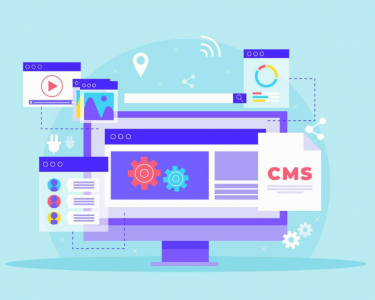As the digital landscape evolves, the intersection of high-performance computing (HPC) and edge computing continues to push the boundaries of data processing and analysis.
HPC computing plays a vital role in growing fields such as artificial intelligence, big data analytics, and the Internet of Things (IoT).
Edge computing complements the HPC environment by reducing latency and improving processing power and speed.
This article explores the emerging trends in HPC and edge-type computing.
Advances in High-Performance Computing (HPC)
Advances in high-performance computing (HPC) represent a foundation of technological progress, unlocking unprecedented computational power to tackle complex problems across diverse fields. It includes exascale computing, specialized architectures, etc.
- Exascale Computing
One of HPC’s most interesting prospects is the drive toward exascale computing. With over a billion computations completed in a second, exascale computers hold the potential to transform complicated problem-solving in research, engineering, and medicine. Exascale systems can especially improve capacities in nuclear physics, biological simulations, and climate studies, offering previously unreachable insights.
- Specialized HPC architectures
Specialized HPC designs are evolving in response to the increasing prevalence of certain computing activities. These systems are designed to maximize efficiency for specific kinds of computations, such as those required for large-scale simulations and machine learning. Examples of hardware innovation supporting specific computing demands are GPU-accelerated and tensor processing units (TPUs), which enable more effective data processing and energy consumption.
- Democratization of HPC
HPC is not just researched for big research organizations and well-funded businesses. Startups and smaller businesses may now access these potent computing capabilities thanks to as-a-service platforms and cloud-based HPC solutions. This democratization promotes innovation in several industries by making sophisticated simulations and analytics accessible to a larger group of people.
The Evolution of Edge Computing
The evolution of edge computing is marked by significant advancements that address the increasing need for localized, rapid data processing in a multitude of IoT and mobile applications. Edge-based computing boosts the growth of IoT and mobile devices, enhances security architectures, and fosters AI integration as well.
- Growth of IoT and Mobile Devices
Due to the exponential growth of IoT devices and mobile connectivity, edge-type computing is expected to grow dramatically. The amount, diversity, and velocity of data are increasing, and edge computing frameworks are adapting to manage this new reality as billions of devices gather and process data locally. This trend guarantees real-time data processing and decision-making, which is essential for manufacturing, smart cities, and autonomous cars.
- Enhanced Security Architectures
With the various points of vulnerability presented by decentralized nodes, security is still the top priority in edge-based computing. Prospective developments suggest a transition towards more resilient, integrated security frameworks that utilize sophisticated encryption, anomaly detection based on machine learning, and federated learning to enhance security measures without jeopardizing data privacy.
- Edge AI Integration
Edge AI reduces latency, consumes less bandwidth, and eases the burden on central servers by processing data locally. Applications that need to make decisions right away, such as industrial automation and healthcare monitoring, depend on this connection.
Convergence of HPC and Edge Computing
The convergence of HPC and edge computing represents a significant shift in computational paradigms, enabling more efficient and powerful data processing architectures. This trend combines the processing frameworks, provides energy-efficient computing solutions, and utilizes cloud-edge environments as well.
- Collaborative Processing Frameworks
Collaborative processing frameworks are emerging from the confluence of edge-type computing and HPC. These frameworks optimize the computational burden and improve the effectiveness of data processing across networks by enabling smooth data flow and compute sharing between edge devices and HPC systems.
- Energy-efficient computational solutions
Energy efficiency is an important field of research since it grows in line with computing demand. Future developments in HPC and edge technologies are moving toward more environmentally friendly methods, such as employing cutting-edge cooling strategies and renewable energy sources. Furthermore, there is a growing trend in the design of algorithms and architectures to minimize power consumption without compromising on functionality.
- Hybrid Cloud-Edge Environments
Organizations looking to strike a balance between the low latency and localization of edge computing and the scalability and power of cloud computing are increasingly utilizing hybrid cloud-edge infrastructures. These settings efficiently distribute resources between the cloud and the edge to enable a variety of applications, such as online gaming and streaming analytics.
Enhanced Interoperability and Standards Development
Enhanced interoperability and standards development are pivotal for the seamless integration and efficient operation of HPC and edge computing technologies across various platforms and devices. It fosters the development of universal standards, generates APIs for seamless integration, and provides integration with open-source environments as well.
- Development of Universal Standards
The creation of universal standards is vital to guarantee device and system compatibility and interoperability, given the expansion of both HPC and edge computing technologies. By facilitating faster communication and data interchange across different platforms and devices, these standards are being established, which will improve network operations and simplify the deployment of scalable solutions.
- APIs for seamless integration
APIs, or application programming interfaces, are essential for improving communication between edge devices and HPC systems. APIs enable the smooth integration of various systems and devices by offering a set of procedures, protocols, and tools for developing software applications. This enables developers to design more robust and adaptable programs that take advantage of the advantages of edge computing and high-performance computing.
- Collaborative Open Source Projects
The movement in computer technology toward open-source projects encourages global cooperation, which speeds up research and the uptake of new technologies. The sharing of concepts, resources, and code is encouraged by open-source initiatives in HPC and edge computing, which helps developers improve system interoperability and advance the creation of novel solutions that can function in a variety of contexts and platforms.
Conclusion
The combination of edge-based computing with HPC is creating a new and exciting direction for technology. These domains promise to open new levels of capacity and efficiency as they develop further, changing the way data is handled and used in a variety of businesses. As computing frameworks become more integrated, efficient, and accessible, high-level computational capability becomes more widely available to a larger range of users and applications, paving the path for more sophisticated research and development.







